Last Chance to Catch NYC's Holiday Notalgia Train
We met the voices of the NYC subway on our nostalgia ride this weekend!

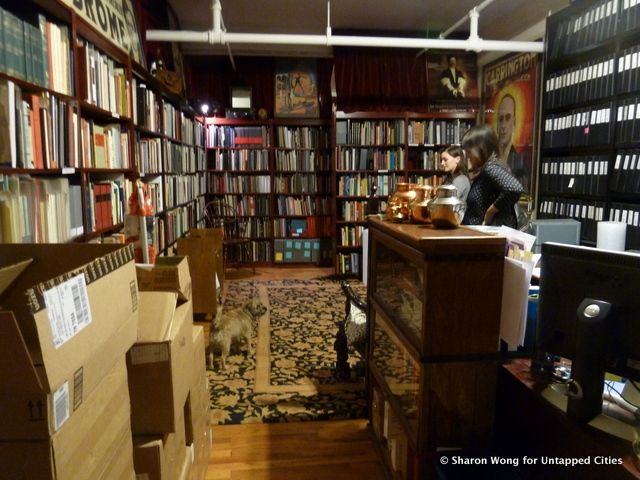
The Conjuring Arts Research Center does not advertise itself to the casual visitor. This is hardly because it lacks educational value, fascinating content or respect for us non-magical commoners. Rather, the Conjuring Arts Research Center’s sole purpose is to further the knowledge of those who have already been initiated into the intriguing, little-understood world of the magician. You might find yourself thinking this is an elaborate prank dreamed up by an inspired Harry Potter fan, but we can assure you that the Conjuring Arts Research Center is anything but a gimmick.
Upon getting out of the elevator, we found ourselves in a dark, cozy library reminiscent of a classic gentlemen’s club. However, it was far from stuffy, and you can easily browse for hours in the comforting gloom. Librarian Jen told us that William Kalush, a magic historian, sleight-of-hand artist, and founder of hte Conjuring Arts Research Center, was becoming increasingly dissatisfied with the paucity of magical research centers. He started to collect resources from around the world, both for his own sake and to share with others like him. Eventually, he had accumulated enough to materialize the Conjuring Arts Research Center, a safe haven for other struggling magic scholars. At the Conjuring Arts Research Center, you can learn all about psychic phenomenon, hypnosis, deceptive gambling, mentalism, ventriloquism, juggling, and sleight of hand techniques.
The books are arranged under broad classes ranging from mentalism to mathematical recreations that gather books under similar categories. Jen explains that there is a lot of mathematics involved in conjuring arts which grounds the discipline in our reality. The Conjuring Arts Research Center also has its own online database system called Ask Alexander.
The Conjuring Arts Research Center is also in the business of resurrecting texts of great historical importance. The latest edition of Gibecière, the bi-annual journal, features a translation of the Asti manuscript. Discovered on a neglected shelf in the Biblioteca Comunale di Asti, the manuscript features extensive documentation of nearly 300 significant tricks in the history of magic, all recorded by an unknown author. Marco Aimone and Italian magician and magical historian, Aurelio Paviato, worked together to restore it. Thanks to the efforts of translator Dr. Lori Pieper, we English speakers can now access the text in what is more or less its original format
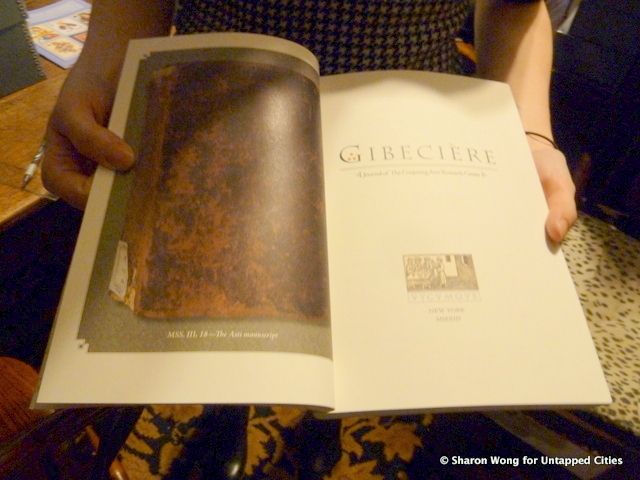
Aside from books, there is quite a lot of memorabilia celebrating the cryptic trade that inspired the Conjuring Arts Research Center. The first thing that caught our eye was a Houdini poster that apparently hung from the side of an early 20th century bus!
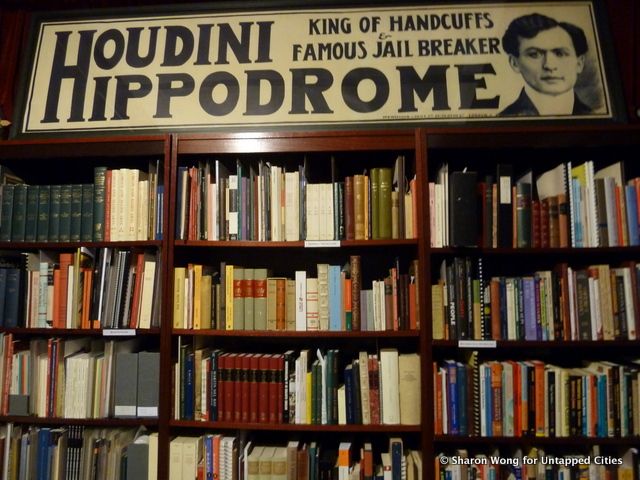
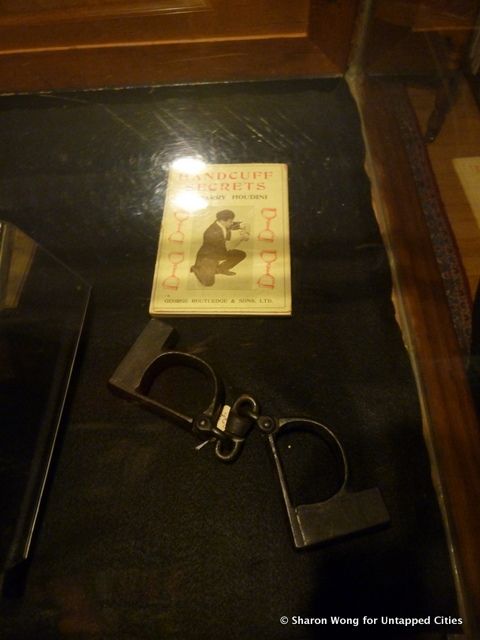
There is also a medallion by Girolamo Scoto, a 17th century magician known for materializing and replicating such medallions. Predictably enough, his most prized ones were made of pure gold. Perhaps this bronze one may not seem quite as impressive, but one should keep in mind that this one came from thin air, not a forge.
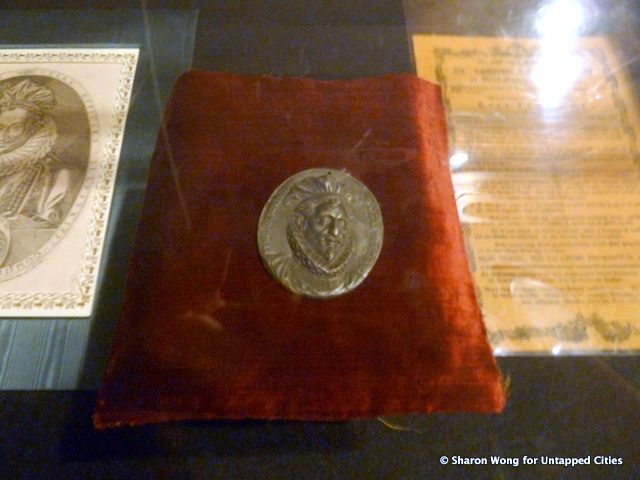
This book features an engraving of Giuseppe Pinetti, an eminent 18th century conjurer. He was so renowned that he was frequently spoofed.
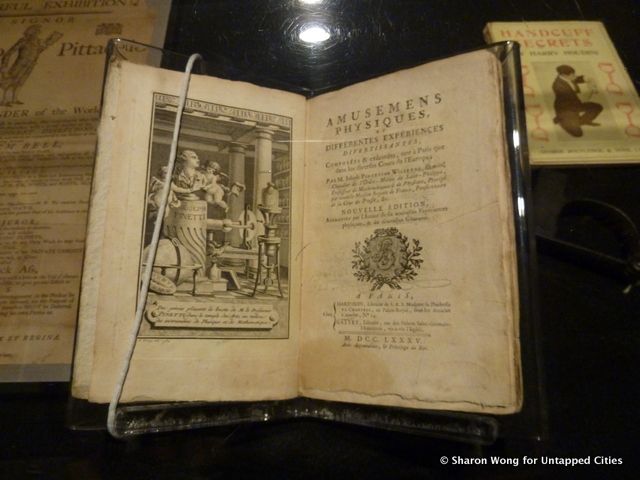
The Conjuring Arts Research Center even has one in the same display case, featuring his thinly disguised doppelganger, Gulielmo Pittachio:
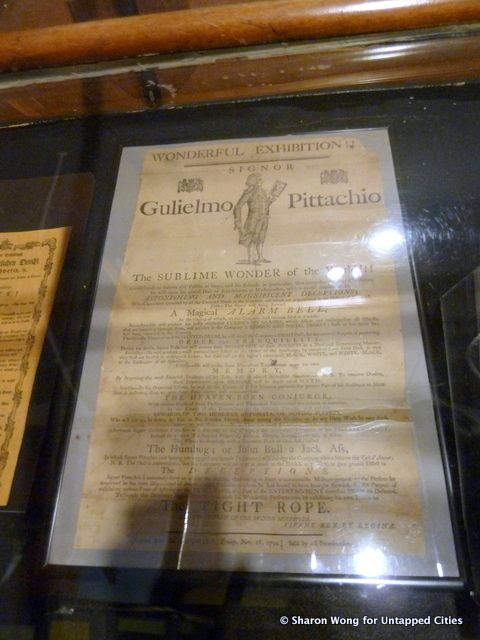
The crown jewel of the research center is the rare books room. The space is suitably atmospheric, resembling the library of an ancient monastery.
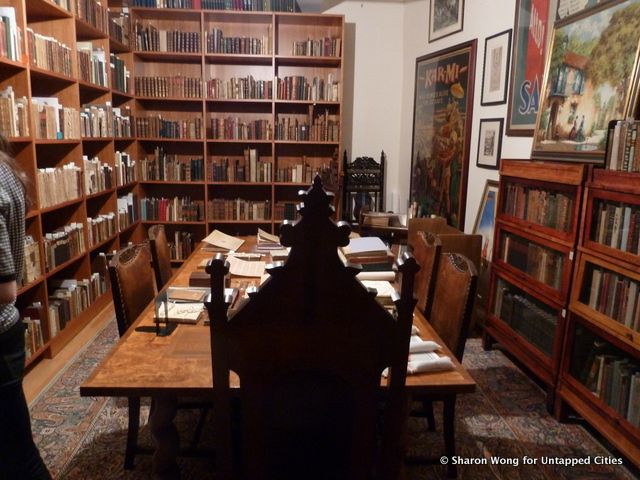
Kalush amassed a wealth of magical books spanning both the globe and history, some of them even dating from the 15th century!
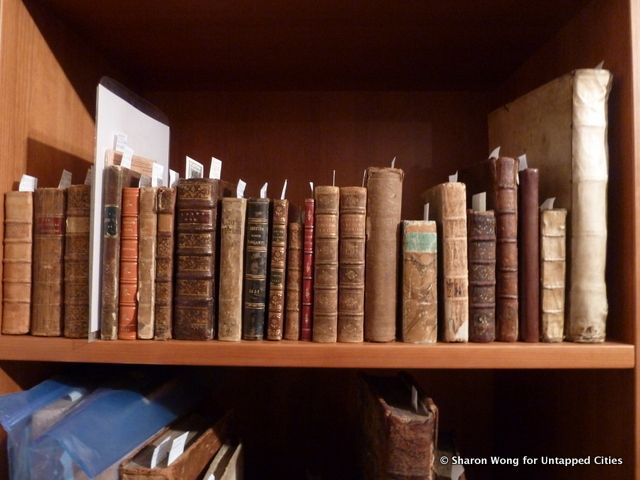
Books with yellowed pages and beautiful leather bindings are strewn all over the table as though awaiting the inspection of scribes.
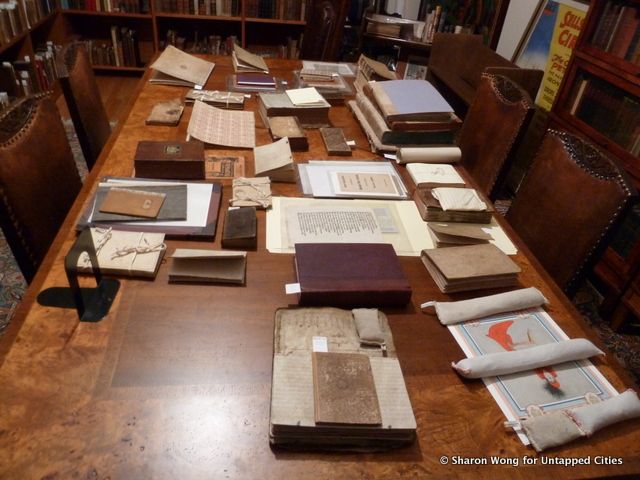
Perhaps it may not quite have the pedigree as some of the other offerings in the room, but this strange machine does have its place in the history of magic.
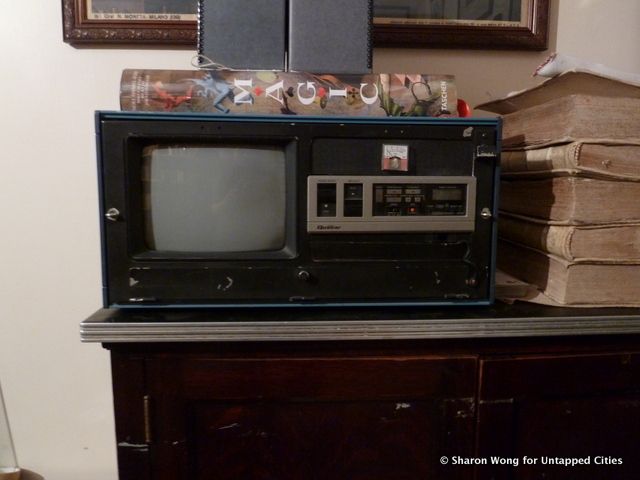
Jen told us that magic and gambling are two very closely intertwined arts, as they both rely heavily on tricks and attention to detail. This is a recording device from back in the ’80s when gamblers could all deal their own cards. It would be stored in a van nearby while a portable piece would be installed in a woman’s purse. She would simply walk behind the gamblers to record the cards they were dealing and the images would pop up on the little screen here. Believe it or not, this microwave-like retro artifact had the prestige of an iPhone back in the day!
Finally, we go to the workroom, where much of the day-to-day business is conducted.
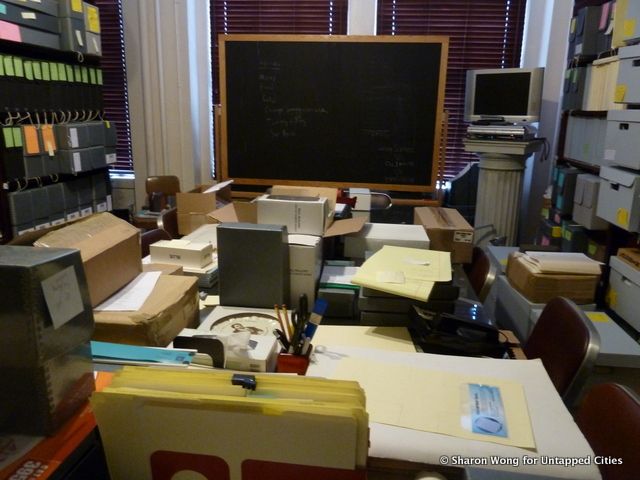
However, even here, there are wonders interspersed amidst banal office apparatus.
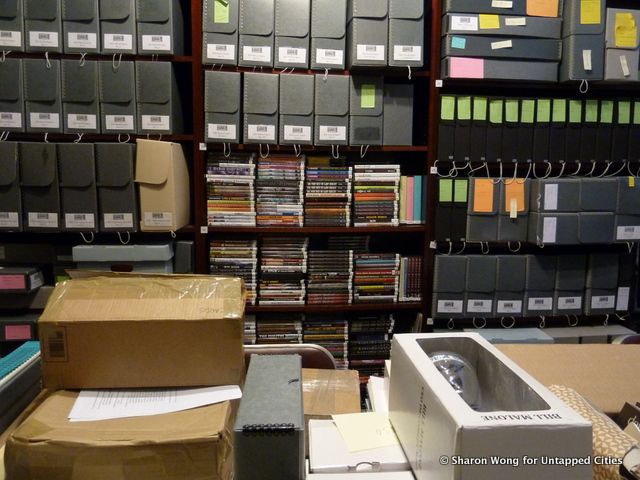
The Conjuring Arts Research Center is known for its vast collection of collection of correspondence between magicians.
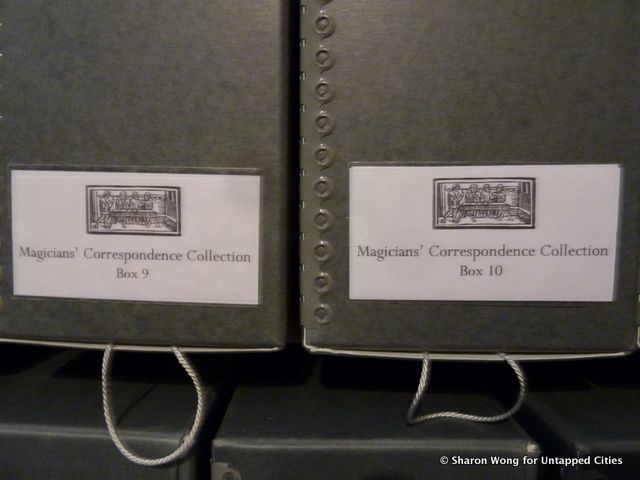
According to Jen, a significant portion of magical history is stored in letters. Many conjurers were reluctant to publish their secrets in solid manuscripts, so they preferred to exchange ideas with other insiders by writing to one another. Often, the discourse continued until one magician passed away.
When I asked Jen whether magic was an innate power or something one could just learn, she explained, “Well, it’s definitely not Harry Potter! But you do have to have some talent to begin with, something you perfect over years of study. Bill (Kalush) has gotten so good at sleight-of-hand that he sometimes does card tricks as he’s just sitting at his desk reading!” From what we gather, we won’t be receiving my acceptance letter from our real world equivalent of Hogwarts. However, we did learned that there is a human, practical side to a profession many of us associate with the fantastic and often, the diabolical.
The Conjuring Arts Research Center is available by appointment only. Members have access to their online search engine Ask Alexander, and their bi-annual journal Gibecière. Learn more about becoming a member of the Conjuring Arts Research Center here.
Subscribe to our newsletter